Abstract
A family suffering from cranial diabetes insipidus, that extends over 4 generations, is described. Inheritance of polyuria was autosomal dominant. Vasopressin function was studied in members of the last 2 generations, 4 of whom had polyuria. Osmoregulation of vasopressin secretion was assessed by infusion of hypertonic saline. Plasma vasopressin remained undetectable in one patient, while 2 others had very blunted vasopressin responses to osmotic stimulation. Three non-osmotic stimuli were applied. Controlled hypotension produced by trimetaphan infusion and insulin-induced hypoglycaemia did not increase plasma vasopressin but apomorphine-induced nausea caused a minimal rise in plasma vasopressin to 0.7 pg/ml. Polyuria and thirst resolved with antidiuretic therapy in all patients studied. Congenital absence of vasopressin as in Brattleboro rats is unlikely to account for diabetes insipidus in this disorder since small increases in vasopressin have been demonstrated in these patients. In view of previous post-mortem findings, familial cranial diabetes insipidus is most likely to be due to degeneration of vasopressin-synthesizing neurones.
Full text
PDF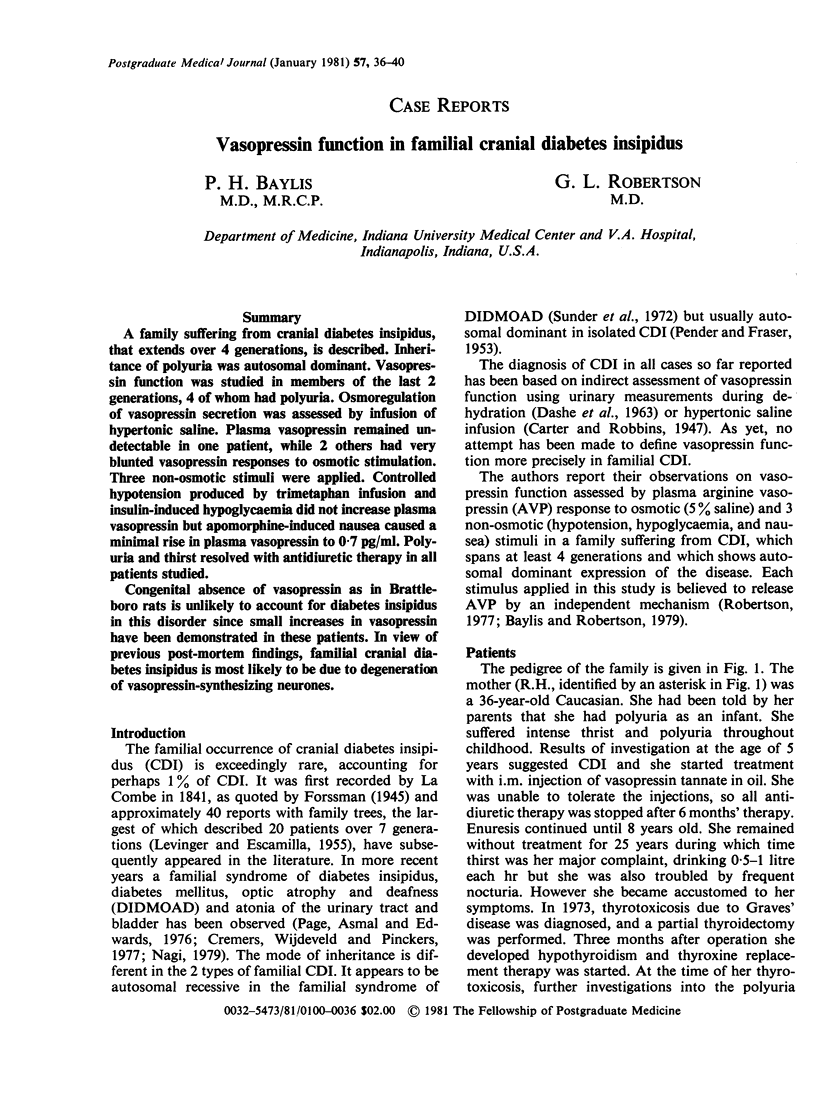
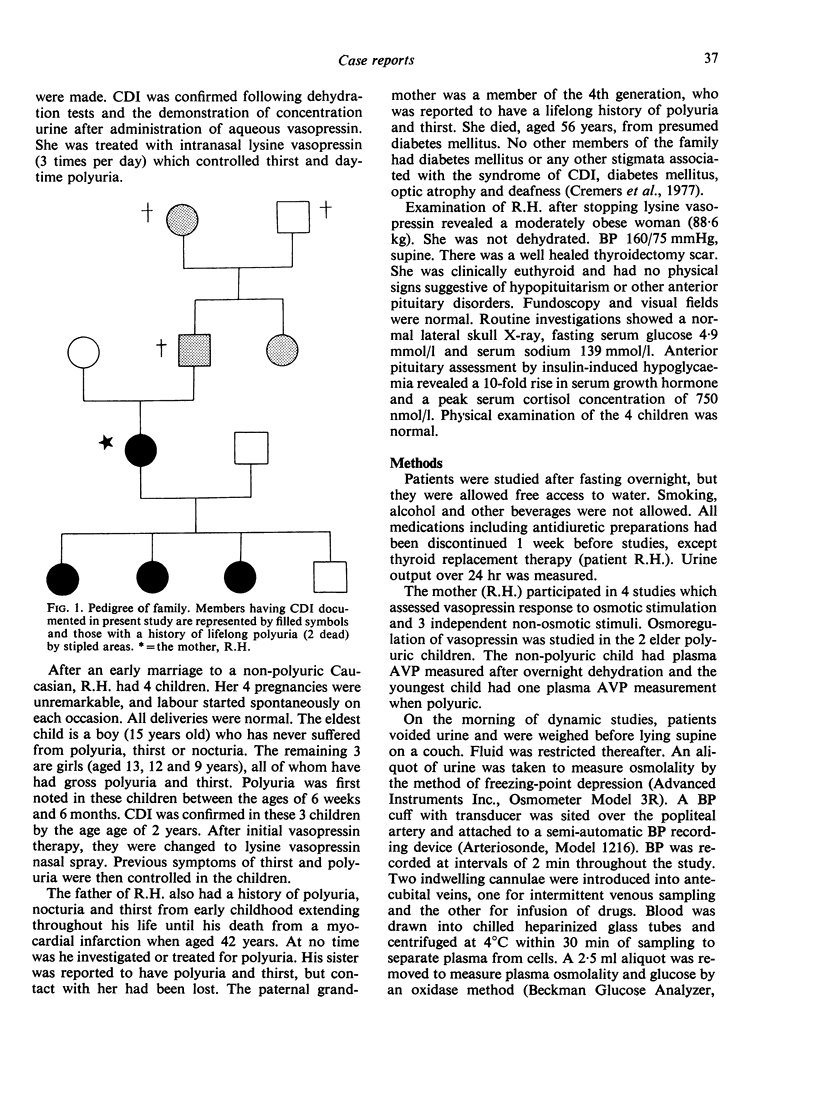
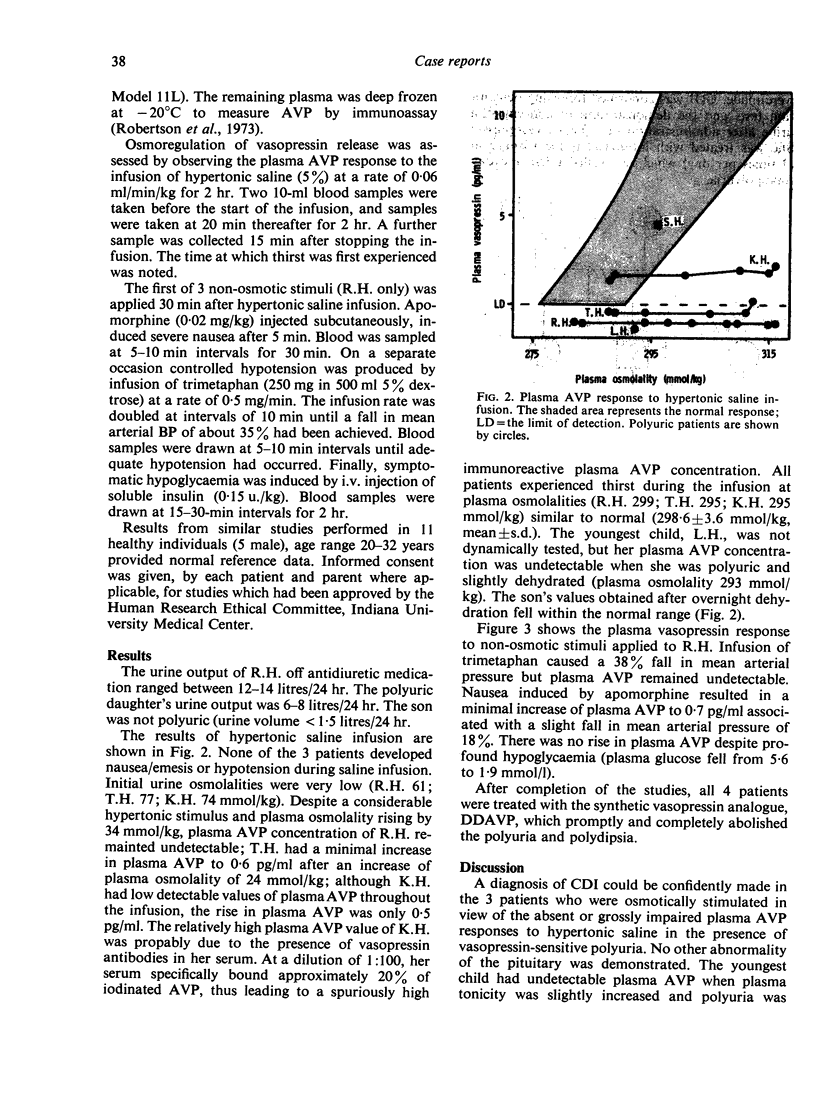
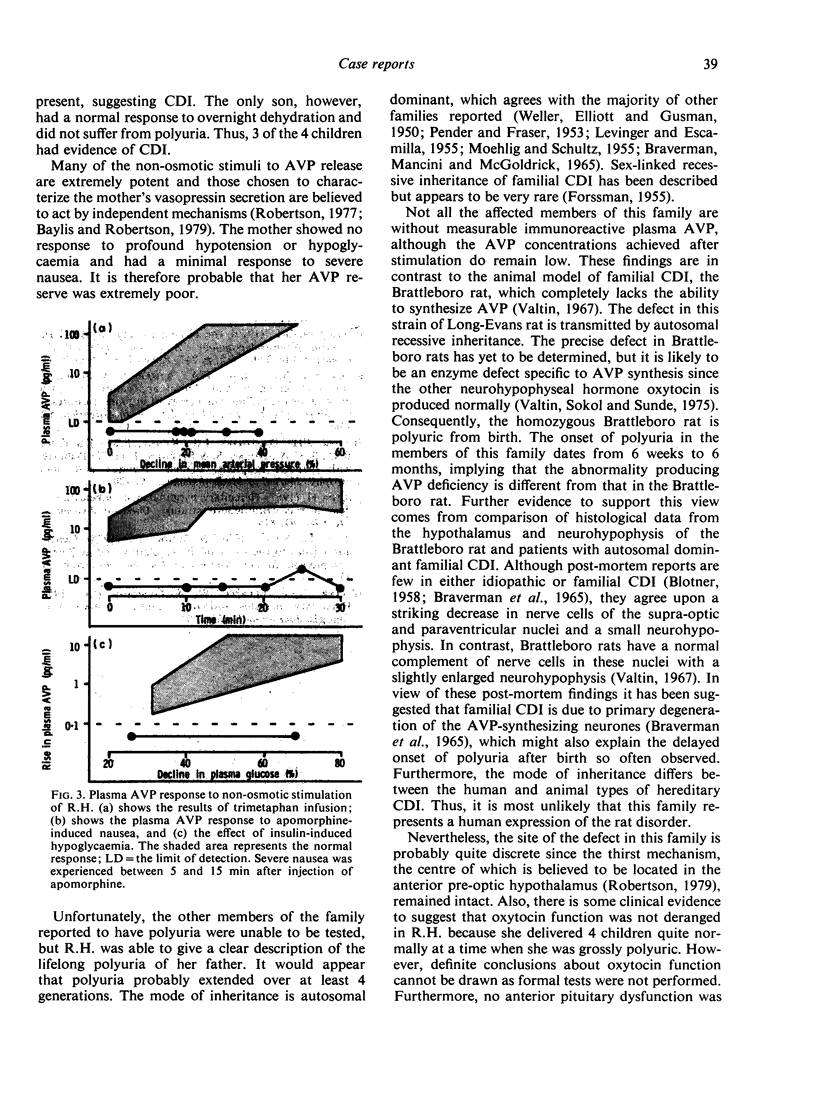
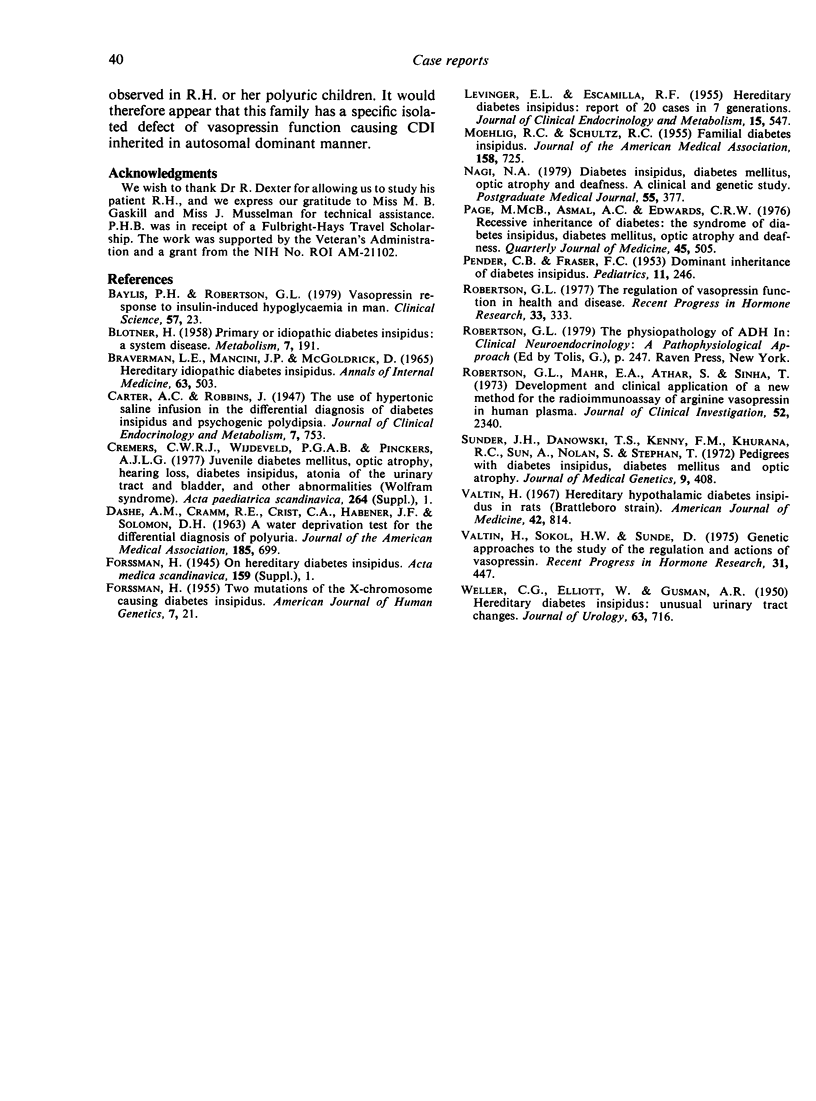
Selected References
These references are in PubMed. This may not be the complete list of references from this article.
- BLOTNER H. Primary or idiopathic diabetes insipidus: a system disease. Metabolism. 1958 May;7(3):191–200. [PubMed] [Google Scholar]
- BRAVERMAN L. E., MANCINI J. P., MCGOLDRICK D. M. HEREDITARY IDIOPATHIC DIABETES INSIPIDUS. A CASE REPORT WITH AUTOPSY FINDINGS. Ann Intern Med. 1965 Sep;63:503–508. doi: 10.7326/0003-4819-63-3-503. [DOI] [PubMed] [Google Scholar]
- DASHE A. M., CRAMM R. E., CRIST C. A., HABENER J. F., SOLOMON D. H. A water deprivation test for the differential diagnosis of polyuria. JAMA. 1963 Aug 31;185:699–703. doi: 10.1001/jama.1963.03060090031011. [DOI] [PubMed] [Google Scholar]
- FORSSMAN H. Two different mutations of the X-chromosome causing diabetes insipidus. Am J Hum Genet. 1955 Mar;7(1):21–27. [PMC free article] [PubMed] [Google Scholar]
- LEVINGER E. L., ESCAMILLA R. F. Hereditary diabetes insipidus: report of 20 cases in seven generations. J Clin Endocrinol Metab. 1955 May;15(5):547–552. doi: 10.1210/jcem-15-5-547. [DOI] [PubMed] [Google Scholar]
- MOEHLIG R. C., SCHULTZ R. C. Familial diabetes insipidus; report of one of fourteen cases in four generations. J Am Med Assoc. 1955 Jul 2;158(9):725–727. doi: 10.1001/jama.1955.02960090019005a. [DOI] [PubMed] [Google Scholar]
- Nagi N. A. Diabetes insipidus, diabetes mellitus, optic atrophy and deafness. A clinical and genetic study. Postgrad Med J. 1979 Jun;55(644):377–380. doi: 10.1136/pgmj.55.644.377. [DOI] [PMC free article] [PubMed] [Google Scholar]
- PENDER C. B., FRASER F. C. Dominant inheritance of diabetes insipidus; a family study. Pediatrics. 1953 Mar;11(3):246–254. [PubMed] [Google Scholar]
- Page M. M., Asmal A. C., Edwards C. R. Recessive inheritance of diabetes: the syndrome of diabetes insipidus, diabetes mellitus, optic atrophy and deafness. Q J Med. 1976 Jul;45(179):505–520. [PubMed] [Google Scholar]
- Robertson G. L., Mahr E. A., Athar S., Sinha T. Development and clinical application of a new method for the radioimmunoassay of arginine vasopressin in human plasma. J Clin Invest. 1973 Sep;52(9):2340–2352. doi: 10.1172/JCI107423. [DOI] [PMC free article] [PubMed] [Google Scholar]
- Robertson G. L. The regulation of vasopressin function in health and disease. Recent Prog Horm Res. 1976;33:333–385. doi: 10.1016/b978-0-12-571133-3.50015-5. [DOI] [PubMed] [Google Scholar]
- Sunder J. H., Danowski T. S., Kenny F. M., Khurana R. C., Sun A., Nolan S., Stephan T. Pedigrees with diabetes insipidus, diabetes mellitus, and optic atrophy. J Med Genet. 1972 Dec;9(4):408–412. doi: 10.1136/jmg.9.4.408. [DOI] [PMC free article] [PubMed] [Google Scholar]
- Valtin H. Hereditary hypothalamic diabetes insipidus in rats (Brattleboro strain). A useful experimental model. Am J Med. 1967 May;42(5):814–827. doi: 10.1016/0002-9343(67)90098-8. [DOI] [PubMed] [Google Scholar]
- Valtin H., Sokol H. W., Sunde D. Genetic approaches to the study of the regulation and actions of vasopressin. Recent Prog Horm Res. 1975;31:447–486. doi: 10.1016/b978-0-12-571131-9.50016-5. [DOI] [PubMed] [Google Scholar]
- WELLER C. G., ELLIOTT W., GUSMAN A. R. Hereditary diabetes insipidus: unusual urinary tract changes. J Urol. 1950 Nov;64(5):716–721. doi: 10.1016/S0022-5347(17)68700-7. [DOI] [PubMed] [Google Scholar]


